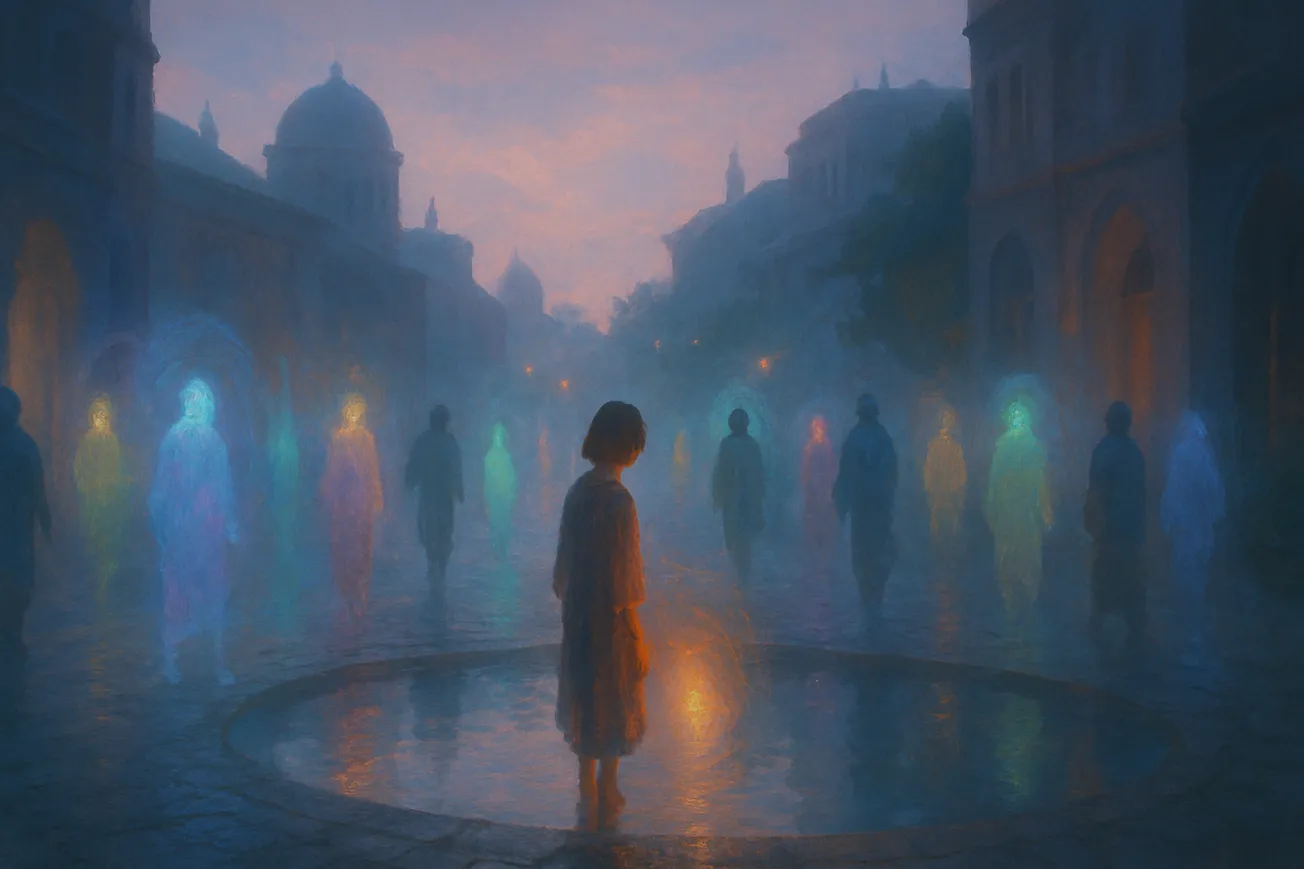🌈 The Fractal Story Engine | Mind & Meaning | (25) MM-006-R
There is a truth older than language: we are born with a trembling. Each of us comes into the world radiant with potential and shadowed with dread. For some, that dread curls itself into the body like a secret, never spoken but always humming. For others, it shapes the very rhythm of their thoughts. Most of us spend our lives pretending it isn’t there.
But what if we couldn’t?
The image of a visible fear aura feels like a punishment, but also, perhaps, a gift. To be seen not for who we pretend to be, but for the creature behind the mask. The one who flinches at loss, or silence, or abandonment. The one who longs for approval, but fears its conditions. What would change if our fears rippled off us in color and shape? Would we hide more carefully? Or would we, at last, release ourselves from hiding altogether?
We build so much around avoiding fear. Not the feeling, but the exposure. A man might dedicate his life to achievement because he cannot bear the color of failure staining his skin. A woman might cultivate perfection so that no one sees the pattern of rejection glowing at her back. And yet, even without visible auras, we already sense these things. We know when someone is afraid to be left. We know when they are afraid to be touched. We just pretend not to.
And pretending exhausts the soul.
In a world where fear was visible, perhaps we would finally stop pretending. Perhaps we would offer comfort rather than correction. Perhaps we would see ourselves not as broken for having fear, but as beautiful for carrying it.
To walk through the world knowing your fear is known is to reclaim a kind of power. Not the performance of strength, but the quiet sturdiness of truth. And if enough of us carried that truth like light around us, owned it, held it gently, maybe it would stop being a wound. Maybe it would become a window.
What is fear, after all, but love with something to lose?
Maybe the ones who glow with fear are the bravest. Maybe fear is not something to overcome, but something to learn how to walk beside. And maybe the end of hiding is not collapse, but transformation.
Not the disappearance of fear, but its transmutation into connection.
What can the reader learn from this story?
We are all shaped by what we fear, but it is the hiding of that fear that isolates us. When we allow our vulnerability to be seen, we open a door to deeper compassion both for ourselves and for others. What if our greatest fear could become our clearest mirror?

